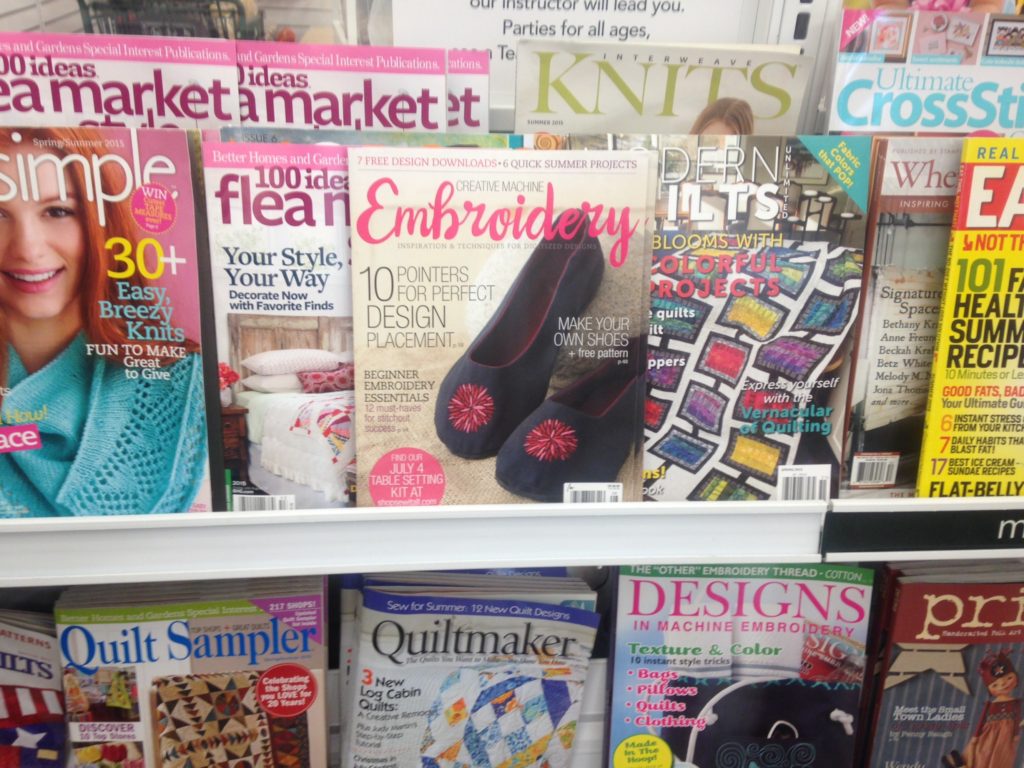
One of my passions (besides shoemaking) is machine embroidery. Like shoemaking, I blog about machine embroidery and even have a line of designs available for sale on Etsy. If you are not familiar with machine embroidery, designs created in the computer can be loaded into a machine and the machine stitches out the design. Anyway – about a year after I started my blog, I was contacted by the editor of Creative machine embroidery magazine who asked me if it would be okay if they featured my blog in the magazine – um… yes! Then she invited me to pitch some ideas for articles. And for some reason I was stupid enough to pitch an article about making embroidered shoes. What did I know about shoemaking? Nothing – which became frightfully apparent to me after they accepted by article and the deadline was looming. As Tim Gunn would say, it was truly a “make it work moment.”
The type of shoes I had proposed were a pair of ballet flats with an embroidered detail. So the first thing I did was to buy some ballet flats and start taking them apart. This helped me establish a basic shape to which I added my own modifications.
The fabric I chose for my shoes was a black duck cloth. It seemed thick and durable and the appropriate shoe weight. I also created a whimsical flower embroidery design to stitch out on the toe. The wine colored cotton lining tied together the embroidery with the rest of the shoe. Writing the instructions was easy as I recorded steps and took a lot of pictures along the way.
A major challenge was finding appropriate soling material. Other web sites that teach shoemaking offer a soft sole that is really only appropriate for indoor wear. I wanted to be able to wear my ballet flats outside but there wasn’t a readily apparent solution. I considered rubber tires and rubber mats but it was way too heavy. A chat with my local shoe repair man, John, led me to Vibram soling sheets – which was just the ticket. It’s way to cut, and easy to sand. The only downside is you have to buy it in large sheets – which is way more than what I needed for my one pair of shoes (which is why I offer it in pieces on my web site.)
Pattern grading was another challenge. I studied dimensions of other shoes and simply used those dimensions for my various sizes. And I turned to other PDF pattern makers to learn how to grade patterns using Adobe Illustrator.
All in all this was a fabulous learning experience an the shoes don’t look that bad. In fact – the editors at CME magazine liked them so much they put them on their cover. The biggest benefit, however was in stoking my curiosity for shoemaking.
